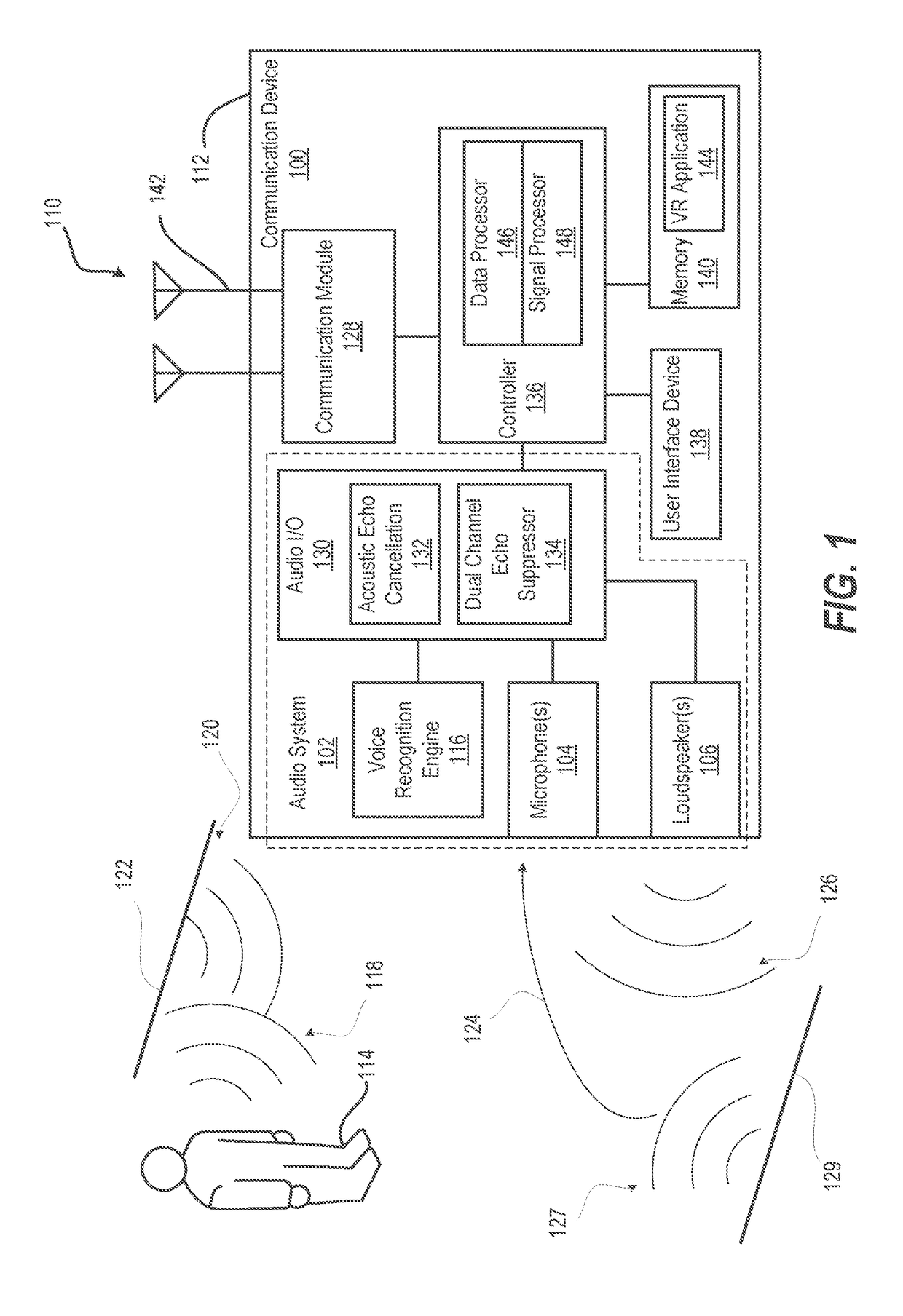Echo cancellation and suppression in electronic device
a technology of electronic devices and suppression, applied in the field of electronic devices, can solve the problems of high sound pressure level, insufficient conventional aec, and increased problem of small electronic devices
- Summary
- Abstract
- Description
- Claims
- Application Information
AI Technical Summary
Benefits of technology
Problems solved by technology
Method used
Image
Examples
Embodiment Construction
[0019]Electronic devices employ multiple speakers in order to reproduce multi-channel audio content, such as multimedia, video playback, in various formats, such as: stereo, 5.1, or other multi-speaker formats. Each speaker or playback channel couples to each of the microphones on the device via a unique echo path. The echo path is not known in advance and tends to vary with time as changes occurs in the relative placement of the electronic device to sources of echoes. Each echo-path provides energy contribution into an uplink signal sent to the automated speech recognition (ASR) system or to a transmission part of the electronic device. This echo path requires compensation. A unique adaptive filter (AF) loop is needed in order to model one echo path, resulting in M×N loops, for a system of M microphones, and N speakers. According to aspects of the present innovation, an electronic device configured for audio signal processing and playback performs echo cancellation and echo suppres...
PUM
 Login to View More
Login to View More Abstract
Description
Claims
Application Information
 Login to View More
Login to View More - R&D
- Intellectual Property
- Life Sciences
- Materials
- Tech Scout
- Unparalleled Data Quality
- Higher Quality Content
- 60% Fewer Hallucinations
Browse by: Latest US Patents, China's latest patents, Technical Efficacy Thesaurus, Application Domain, Technology Topic, Popular Technical Reports.
© 2025 PatSnap. All rights reserved.Legal|Privacy policy|Modern Slavery Act Transparency Statement|Sitemap|About US| Contact US: help@patsnap.com



